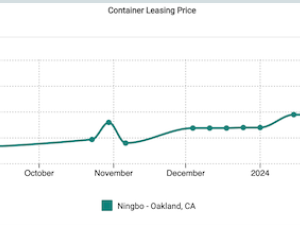WTSA said the reviews are being conducted by subcommittees of lines with significant expertise and market participation in the specific commodity areas. Initial cargo segments reviewed include wastepaper, metal and plastic scrap, protein cargo (refrigerated beef, pork and poultry), hay, hides, agri-products, chemicals, clay, forest products, dry miscellaneous 'freight all kinds' (FAK) cargo, and refrigerated 'not otherwise specified' (NOS) cargo such as dairy products, baked goods or other prepared foods that are not covered under any commodity-specific review. A program for cotton is being developed under a separate seasonal schedule.
Because adjustments will vary by commodity, WTSA lines will notify accounts as levels are determined, and adjustments will be posted on the WTSA web site, HYPERLINK "http://www.wtsacarriers.org" www.wtsacarriers.org.
WTSA executive administrator Brian M. Conrad indicated that some westbound transpacific rates have approached levels that are below carrier costs, and rate increases are necessary to make carriage of some cargo financially feasible. A previous round of scheduled increases last July had only limited success, Conrad said, and levels have eroded further since then. In the refrigerated market, a shortage of equipment, as containers have migrated to more lucrative trades, coupled with higher purchase and lease prices, has added to costs while rates continue to lag. 'We're hoping that market fundamentals will be more supportive of rate improvement in the coming months as we move into the winter period when westbound volumes typically start to improve,' he added.






